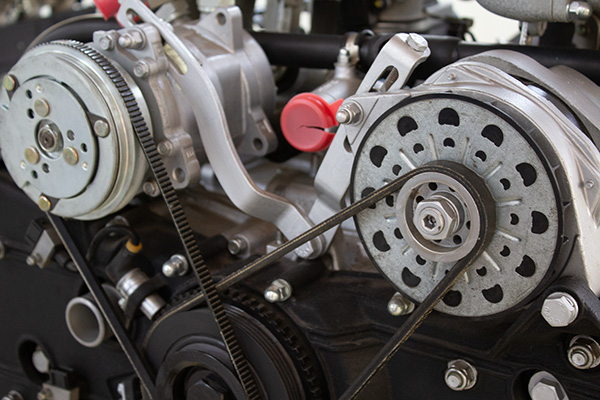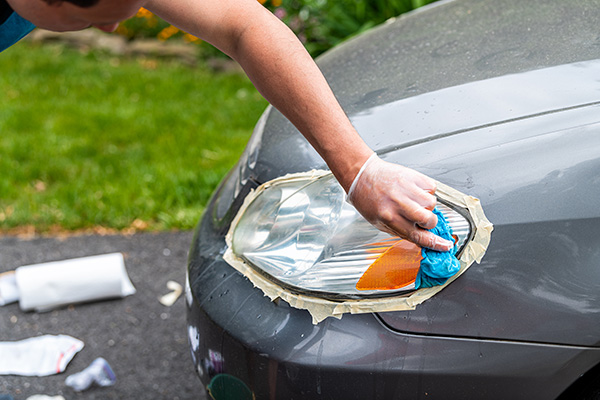Posted on 12/20/2024

Seeing black smoke pouring out of your car’s exhaust can be alarming, and for good reason. It’s not just an eyesore; it’s your car’s way of signaling that something is off. Whether you’re driving through the streets of Colorado Springs, CO, or stuck in traffic, noticing black exhaust smoke demands immediate attention. Understanding the causes and implications can save you from costly repairs and ensure your car stays in peak condition. Why Is Your Car Emitting Black Smoke The color of exhaust smoke can indicate the health of your engine and fuel system. Black smoke, in particular, is often a sign that your engine is burning more fuel than necessary. These are the most common reasons for this issue. Fuel Injection Problems Modern cars rely on precise fuel injection systems to maintain the correct air-to-fuel ratio. When this system malfunctions, too much fuel can enter the combustion chamber, leading to black smoke. Comm ... read more
Posted on 11/29/2024

There’s nothing quite as frustrating as hearing that dreaded thump-thump-thump while driving, only to realize you’ve got a flat tire. Whether you're on a busy highway or a quiet street, a flat tire can put a damper on your day. However, knowing how to change a flat tire can turn a stressful situation into a minor inconvenience. With the right tools and a bit of patience, you can get back on the road in no time. Let’s walk through the steps of changing a flat tire safely and efficiently. 1. Pull Over to a Safe Location When you realize you have a flat tire, it’s crucial to find a safe spot to pull over. Look for a flat, stable surface away from traffic. If you’re on a highway, exit if you can or pull over to the shoulder. Turn on your hazard lights to alert other drivers. And don’t forget to engage your parking brake once you’ve stopped—it’ll keep your vehicle from rolling while you work. Always carry a safety ... read more
Posted on 10/31/2024

Winter driving comes with a unique set of challenges, and one of the most damaging elements your vehicle faces is road salt. While salt is necessary for keeping roads ice-free, it can wreak havoc on your car’s undercarriage. Corrosion, rust, and long-term damage to vital components are common results of prolonged salt exposure. Protecting your car’s undercarriage from road salt is important if you want to extend the life of your vehicle and avoid costly repairs. So, how can you safeguard your car from this winter menace? Let’s explore some effective strategies. Why Does Road Salt Harm Your Car Road salt is typically made of sodium chloride, accelerating the rusting process when combined with water and oxygen. This is especially problematic for your car’s undercarriage, where components like the exhaust system, suspension, and brake lines are exposed to the elements. Rust doesn’t just affect your car's appearance; it compromises struc ... read more
Posted on 9/27/2024

As the cold months roll in, prepping your car is a smart move to ensure it runs efficiently and keeps you safe on the road. Freezing temperatures, icy conditions, and heavy snow can all put additional stress on your vehicle, leading to issues if left unchecked. Fortunately, taking a few preventative steps can go a long way in avoiding potential headaches when the cold weather hits. Here’s a guide on the eight essential steps to get your car winter-ready. 1. Test Your Battery The drop in temperature can significantly affect your car’s battery performance. Cold weather slows down the chemical reactions inside the battery, making it harder for your car to start. A weak or old battery can fail completely during the winter months. Before the freezing cold sets in, check the voltage and overall condition of your battery. If it’s over three years old, consider getting it tested by a professional or replaced altogether to avoid being stranded with a dead b ... read more
Posted on 8/30/2024

Driving through the Rocky Mountains can be an exhilarating experience, offering breathtaking views and challenging terrain. However, the higher you go, the more your car has to adapt to the changing conditions. Higher elevations can significantly impact your vehicle's performance, and it's crucial to understand these effects to ensure a smooth and safe journey. We'll explore the various challenges cars face at higher altitudes and provide tips on how to prepare for and mitigate these issues. Reduced Engine Performance One of the most noticeable impacts of higher elevations is the reduction in engine performance. As you ascend, the air becomes thinner, containing less oxygen. Since internal combustion engines rely on a precise mix of fuel and air to generate power, the reduced oxygen levels mean less efficient combustion. This can lead to a noticeable drop in engine power and acceleration. Your car may feel sluggish, especially when climbing steep inclines ... read more
Posted on 7/26/2024

Transmission maintenance is one of those things that car owners often overlook until it's too late. But when it comes to keeping your vehicle running, few things are as important as a well-maintained transmission. Among the various maintenance tasks, technicians often recommend a transmission flush. But is it really necessary? The Transmission in a Car Before we can decide if a transmission flush is necessary, it's important to understand what the transmission does. Essentially, the transmission transfers power from the engine to the wheels, allowing your car to move at different speeds. There are two main types of transmissions: manual and automatic. Regardless of the type, the transmission contains a complex system of gears and components that require clean, high-quality transmission fluid to function properly. What is a Transmission Flush ... read more
Posted on 6/27/2024

Keeping your car in top condition is essential for safe driving and compliance with state regulations. If you're a driver in Colorado, understanding the vehicle inspection requirements can sometimes feel like navigating a maze. However, knowing what inspections are necessary and when they're required is crucial for staying on the right side of the law and ensuring your vehicle's performance. Let's break down everything you need to know about Colorado's vehicle inspections to help you stay informed and prepared. Types of Vehicle Inspections in Colorado In Colorado, vehicle inspections fall primarily into two categories: emissions inspections and safety inspections. Each serves a different purpose and has specific requirements. Emissions Inspection The purpose of an emissions inspection is to ensure that your vehicle meets the state's air quality standards. Colorado's Emissions Control Program (ECP) is designed to reduce air pollution and ... read more
Posted on 5/28/2024

Navigating rush hour traffic on Interstate 25 (I-25) can be daunting, but with the right strategies, you can ensure a safer and less stressful commute. Rush hour traffic, especially on busy highways like I-25, can lead to congestion, delays, and an increased risk of accidents. Whether you're a daily commuter or an occasional traveler, adopting the best practices for navigating I-25 during rush hour can help you reach your destination safely and efficiently. Understanding Traffic Patterns Before hitting the road, familiarize yourself with the typical traffic patterns on I-25 during rush hour. It typically occurs during the morning and evening peak commuting times, with traffic congestion reaching its peak around 7-9 a.m. and 4-6 p.m. Knowing when congestion is at its peak can help you plan your commute more effectively and avoid unnecessary delays. Staying informed about any ongoing construction or road closures along your route can help you plan alternative paths ... read more
Posted on 4/27/2024

When it comes to the intricate workings of our vehicles, the realm of belts often confuses many drivers. We've all heard of timing belts and serpentine belts, but what exactly sets them apart? Timing Belt vs. Serpentine Belt 1. Anatomy and Functionality In the automotive ecosystem, timing belts and serpentine belts play distinct yet equally vital roles. The timing belt, also known as a cambelt or timing chain, is a toothed rubber belt responsible for synchronizing the rotation of the engine's crankshaft and camshaft(s). This synchronization ensures precise valve timing, facilitating efficient combustion and optimal engine performance. On the other hand, the serpentine belt, aptly named for its snake-like winding path, is a flat, ribbed belt that drives multiple engine components such as the alternator, power steering pump, and air conditioning compres ... read more
Posted on 3/28/2024

As you navigate the roads at night, you may have noticed that your headlights appear fuzzy or clouded. This common issue not only diminishes the aesthetic appeal of your vehicle but can also compromise visibility, posing a safety concern. Causes of Fuzzy HeadlightsOxidation and UV Exposure Over time, your headlights are exposed to harsh elements, including sunlight and UV rays. This exposure leads to oxidation, causing the outer layer of the headlights to become cloudy and hazy. Environmental Contaminants Road debris, pollution, and other environmental contaminants can accumulate on your headlights, contributing to the haziness over time. Incorrect Cleaning Using abrasive cleaners or rough materials when cleaning your headlights can scratch the surface, making them more prone to clouding ... read more